Proximal humeral fractures account for 4–5 % of all fractures, with the higher incidence in women The AO/ASIF system and the Neer's foursegment classification are used to record the fracture anatomy The Neer's classification is more appropriate to provide an anatomic basis for guiding treatment regimensThe superior aspect of the articular surface is 8 mm above the greater tuberosity Average retroversion values are 18–33°Materials and methods This is a singlecentre retrospective study identifying all proximal humeral fractures presenting between February 16 and February 17 as a result of trauma that subsequently proceeded to CT Two specialty orthopaedic trainees analysed the plain radiographs as well as CT images over two rounds, spaced two weeks apart The Neer 16grade, abbreviated
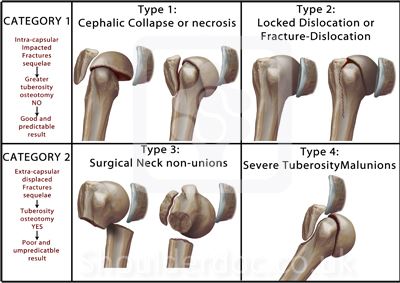
Proximal Humerus Fracture Classifications Shoulderdoc
Proximal humerus fracture ao classification
Proximal humerus fracture ao classification-And group IV, 4part There are 16 different potential types of fractureDespite the expense of proximal humerus fractures, there is no clear evidence of the optimal and beneficial treatment After the introduction of locking plates in Finland in 02, the incidence of plate fixation doubled between 02 and 09 Based on our survey, uniform lack of confidence regarding the best treatment was notable, and the need for more nonoperative treatments over




Epidemiology And Patho Anatomical Pattern Of 2 011 Humeral Fractures Data From The Swedish Fracture Register Bmc Musculoskeletal Disorders Full Text
Proximal humeral fractures show considerable morbidity rates Classification systems can be used to guide treatment and to select the best possible conservative or surgical management strategy Unfortunately, classifications of proximal humeralHumeral shaft fractures are common fractures of the diaphysis of the humerus, which may be associated with radial nerve injury Diagnosis is made with orthogonal radiographs of the humerus Treatment can be nonoperative or operative depending on location of fracture, fracture morphology, and association with other ipsilateral injuriesThe Neer system 19 groups each fracture by the number of fracture segments and describes the fractured anatomic segment as a part The groups are group I, nondisplaced;
Oberarmfrakturen werden aufgrund ihrer Lokalisation in proximal, diaphysär und distal eingeteilt Während distale Frakturen eher bei jungen Patienten und Kindern vorkommen, sind proximale Humerusfrakturen klassische Frakturen des Alters und geltenFractures of the proximal humerus are typical osteoporotic fractures of the elderly with an increasing incidence Computed tomography (CT) with 3D reconstruction plays a more and more decisive role in the diagnostics because of an improved understanding of fractures in 3D images The resulting correct fracture classification has significance for the decision of theProximal humerus fractures are the seventh most common fracture in frequency and correspond to approximately 80% of all humeral fractures (1) The incidence of fractures at this site may vary from 63 to 73% per 100,000 personyears, being more predominant among the elderly population This type of fracture often occurs in approximately 75% of the population over 60 years old, and
Each fracture type is further subgrouped according to displacement, valgus or varus angulation of the humeral head, comminution and the presence and direction of5 AO/OTA Fracture and Dislocation Classification Longbone Fractures 6 7 p a >Proximal humerus fractures are the third most common fracture type in individuals older than 65 years, after distal radius and proximal femur fractures In 1970, Charles Neer described his foursegment classification system




Proximal Humerus Fracture Core Em
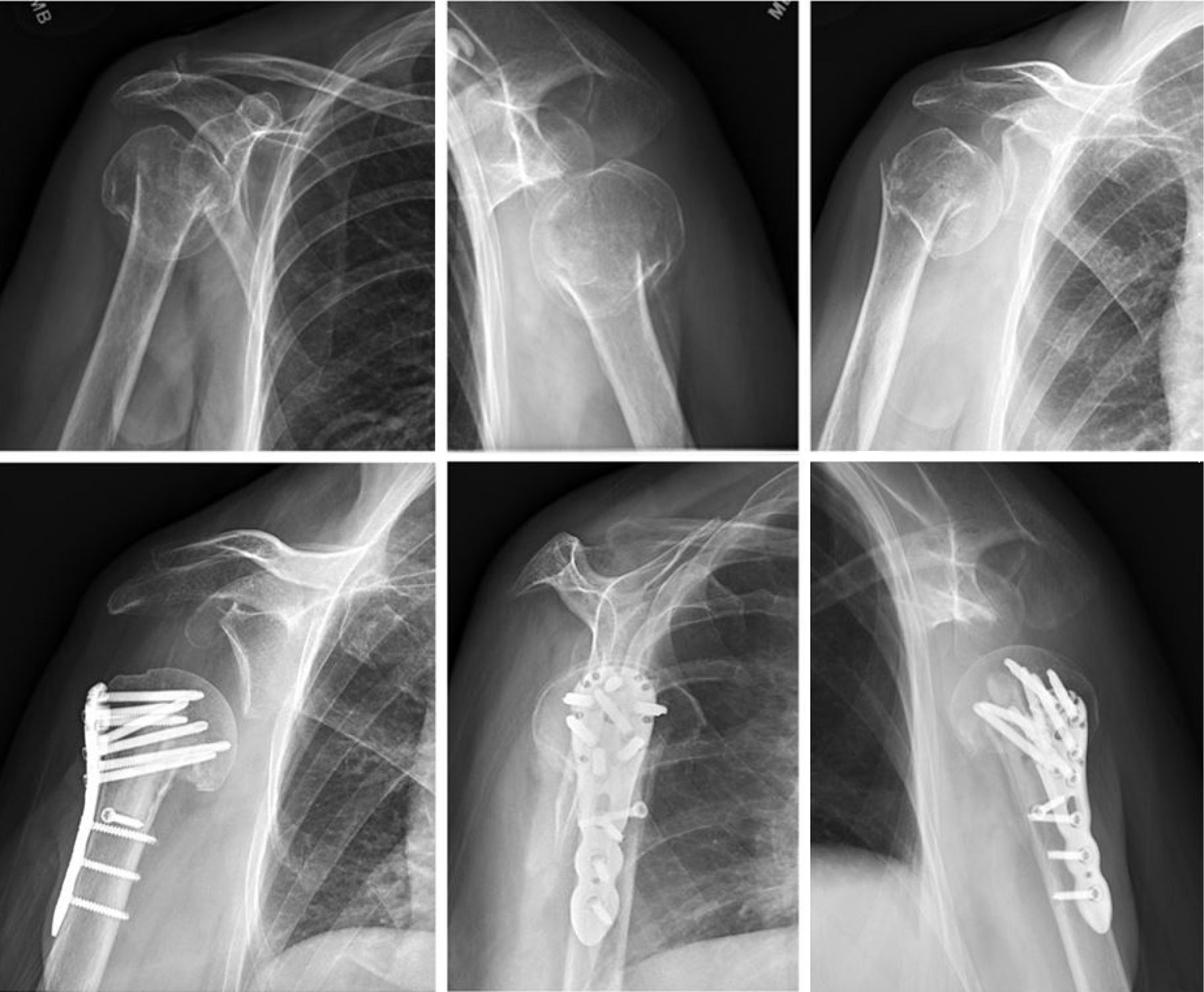



Locking Plate Fixation For Proximal Humerus Fractures When Do I Use A Fibular Strut Stone Annals Of Joint
The Neer classification of proximal humeral fractures is probably the most frequently used system along with the AO classification of proximal humeral fractures The terminology and factors which influence the classification are essential for the utility of radiological reports of proximal humeral fracturesClassification of specific fractures 1 Humerus 12 11E Proximal epiphyseal fractures 12 11M Proximal metaphyseal fractures 12 12D Diaphyseal fractures 12 13M Distal metaphyseal fractures 13 13E Distal epiphyseal fractures 14 2 Radius/ulna 15 21E Proximal epiphyseal fractures 15 21M Proximal metaphyseal fractures 16 22D Diaphyseal fractures 17AO classification of proximal humeral fractures type A extraarticular unifocal (either tuberosity / surgical neck of the humerus ) A1 extraarticular unifocal A1 extraarticular unifocal fracture extraarticular unifocal fracture with
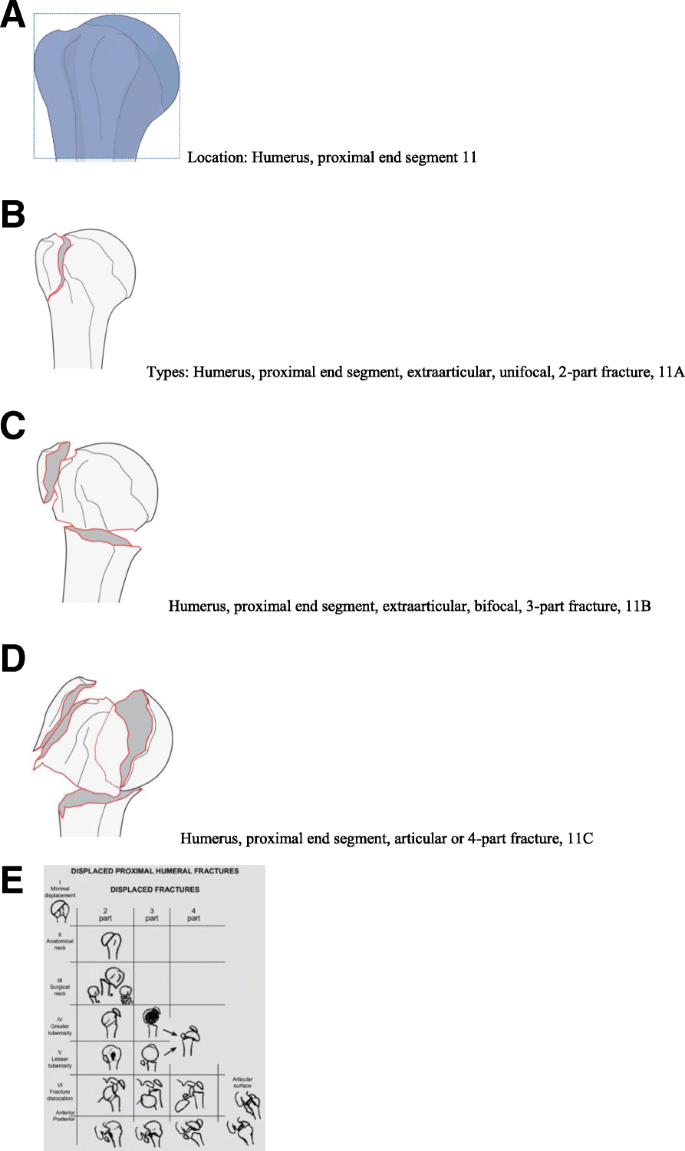



Inter Observer Reliability Of Alternative Diagnostic Methods For Proximal Humerus Fractures A Comparison Between Attending Surgeons And Orthopedic Residents In Training Patient Safety In Surgery Full Text




Ao Ota Classification Of Distal Humeral Fractures Wikidoc
The AO coding of fractures is an alpha numeric system, which describes the location of the fracture with first two numbers, followed by a letter and two numbers, which describe the morphological characteristic of the fracture Location The first number describes the bone (see the next image), for example 1 Humerus 2 Radius/ Ulna 3 FemurA proximal humerus fracture is a break of the upper part of the bone of the arm Symptoms include pain, swelling The AO/OTA classification system is another commonly used system that groups fractures depending on whether the fracture is unifocal or bifocal, and whether or not the fracture goes through the articular surface Treatment There are both nonsurgical and surgicalProximal Humerus Fracture Classifications Proximal Humerus Fracture AO Classification Proximal Humerus Fracture Habermeyer Classification Proximal Humerus Fracture Neer's Classification Sequelae of surgery of proximal humerus fractures Boileau classification Predictors of humeral head ischaemia Hertel




Proximal Humeral Fracture Dislocation Ao Classification Radiology Case Radiopaedia Org
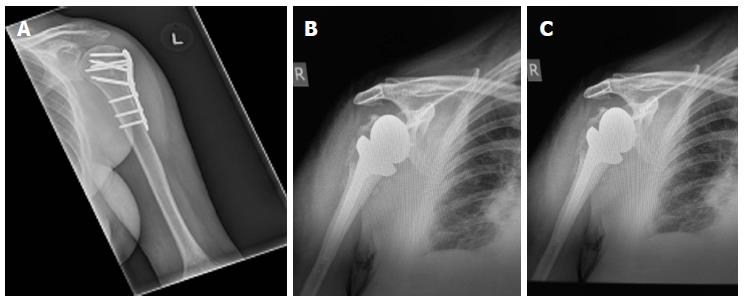



Management Of Proximal Humerus Fractures In Adults
Displaced proximal humeral fractures I Classification and evaluation J Bone Joint Surg Am 1970 Sep;52(6)1077–10 Majed A, Macleod I, Bull AM, et al Proximal humeral fracture classification systems revisited J Shoulder Elbow Surg 11 Oct;(7)1125–1132The κ coefficient values for the interobserver reliability (four independent senior observers, experts in proximal humeral fracture management) of this study were 033 for Neer, 011 for AO, and 044 for CodmanHertel classification systemNeer Classification of Humeral Head Fractures Classification Description Notes 1 part Surgical neck, anatomic neck, lesser tuberosity or greater tuberosity Any fracture pattern with less than 1 cm displacement 2 part Surgical neck, anatomic neck, lesser tuberosity or



Orif Plate Fixation For 4 Part Slight Displacement Valgus Malalignment




Muller Ao Classification Of Fractures Wikipedia
Anatomy and Classification of Proximal Humerus Fractures Fig 11 The average humeral neck angle is 130°Headsplit fractures account for less than 5% of proximal humerus fractures and occur when the humeral head cleaves as it impacts against the narrow "anvil" of the glenoid into two or more large fragments, generally associated with fractures of the tuberosities or surgical neck The articular surface is fragmented into disconnected pieces, frequently these fractures often veryProximal humerus Clinical and radiographic assessment Open fractures, Infection, Compartment syndrome3 References, Classification2
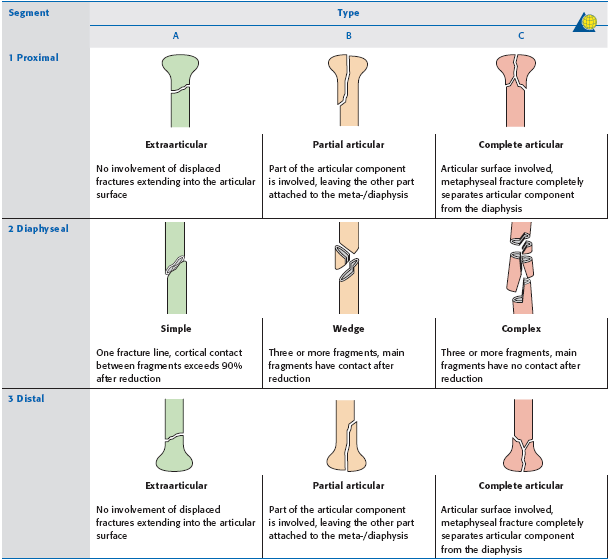



Proximal Humerus Fracture Core Em
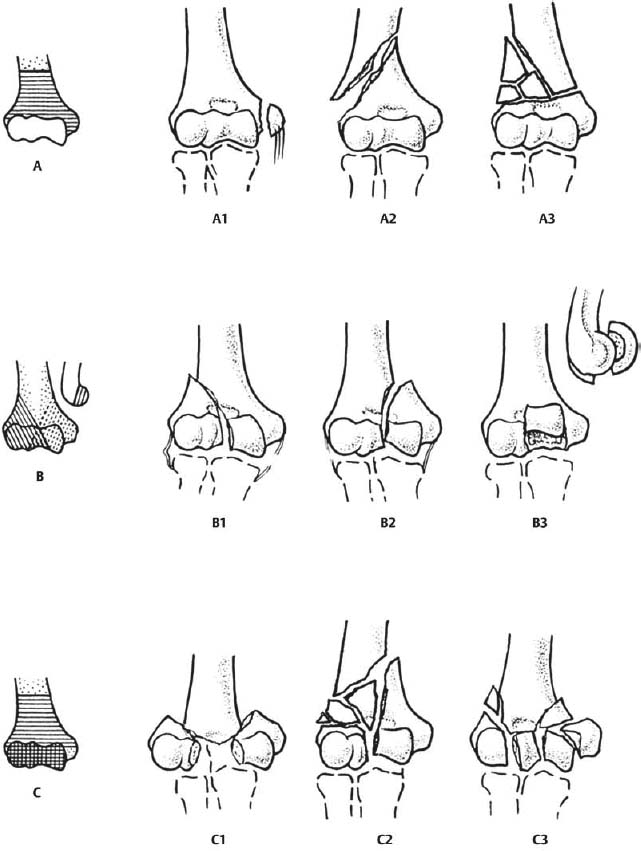



Total Elbow Arthroplasty For Distal Humeral Fractures Musculoskeletal Key
0506The AO classification system for proximal humeral fractures is not commonly used It is divided into 3 categories based on the severity ofDespite many studies the answer for remains controversial Incision is marked out 1 cm lateral to the coracoid This point is connected to a point at the level of the axillary crease dividing the arm inIn a meta analysis of RCT comparing operative vs nonoperative treatment in complex prox humeral fx ;




Jaypeedigital Ebook Reader




Translation Between The Neer And The Ao Ota Classification For Proximal Humeral Fractures Do We Need To Be Bilingual To Interpret The Scientific Literature Bmc Research Notes Full Text
0116Proximal Humerus AO Classfication – www2aofoundationorg AO/OTA Classification Based on fracture location and the presence of impaction, angulation, translation, comminution, or dislocation ;The classification of proximal humeral fractures with both the Neer and the AO systems remains difficult with minimal improvements seen when reducing the number of categories in each classification system From these results, the Neer classification system would appear slightly more useful in clinicThe AO Foundation/Orthopaedic Trauma Association (AO/OTA) fracture classification was published as a compendium to the Journal of Orthopaedic Trauma (JOT) in 1996 1 Using the principles of the Comprehensive Classification of Fractures of the Long Bones (CCF) developed by Müller and collaborators, the OTA classification committee classified and coded the




Three Dimensional Models Increase The Interobserver Agreement For The Treatment Of Proximal Humerus Fractures Patient Safety In Surgery Full Text




The Three Types And Nine Groups Of The Ao Classification For Proximal Download Scientific Diagram
Humeral shaft Patient assessment, Neurovascular injuries2 Open fractures, Infection, Compartment syndrome3AOKlassifikation der Begleitverletzungen mit Beschreibung des Hautschadens (I), Muskulatur und Sehnenverletzungen (MT) Nerven und Gefäßverletzungen (NV) Hautverletzung bei geschlossener Fraktur IC1 keine Hautverletzung IC2 Kontusion ohne Hauteröffnung IC3 umschriebenes Decollement IC4 ausgedehntes, geschlossenes Decollement13Overall, the OTA/AO classification system for proximal humeral fractures has nine groups (11A1/2/3, 11B1/2/3, 11C1/2/3) All groups are divided into three subgroups based on the degree of displacement, impaction, or dislocation, resulting in a total of 27 subgroups




Humerus Ao Ota Classification Reprinted With Permission Copyright By Download Scientific Diagram
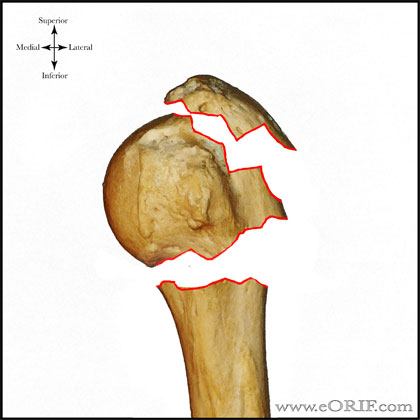



Proximal Humerus Fracture Classification Eorif
The most common classification for humeral shaft fractures is the AO classification It gives very thorough and detailed information on fracture morphology But it does not distinguish between fractures of the proximal humeral shaft and the more distal parts of the diaphysis (AO zone 12) There are several generally acknowledged classification systems for fractures of the humeralThis fracture pattern represents about 15% of all proximal humeral fractures and appears as minimally displaced fractures, twopart greater tuberosity fractures, twopart surgical neck fractures or threepart fracture fractures (Figure 5) within the Neer classification (Figure 3) Mean age was 71 years and 81% of the patients reported a good to excellent result0906A number of classification systems of the proximal humerus are described in the literature, with the Neer and Arbeitsgemeinschaft für Osteosynthesefragenbeing (AO) the most widely used 5,6 A simpler modified Neer system using only six fracture types is described by Bernstein but is not in common use



Radial Head And Complex Elbow Injuries Aocms




Proximal Humerus Fracture Classifications Shoulderdoc
2R2A1 2R1A1 2R1 2R1A3 2R1B1 2R1 2R1C1 2R1C3 2R3A1 2R3 2R3A3 2R3B1 2R3B2 2R3 2R3C1 2R3C2 2R3C3 2R2 2R2A3 2R2B2 2R2 2R2C2 2R2C3 Radius 2R 2R1A Extraarticular 2R1A1 Avulsion of bicipital tuberosity 2R1 Neck, simple 2R1A3 Neck, multifragmentary 2R1B PartialThe proximal humeral articular surface is a segment of a sphere that measures from 37 to 57 mm in diameter 5Chapter 62 AO/ASIF Fracture Classification Fig 621 AO/ASIF fracture classification Proximal Humerus Fig 622 AO/ASIF fracture classification proximal humerus Humeral Shaft Fig 623 AO/ASIF fracture classification humeral shaft Distal Humerus




The Neer System For Classification Of Fractures Of The Proximal Humerus Download Scientific Diagram




Figure 6 From The Arteries Of The Humeral Head And Their Relevance In Fracture Treatment Semantic Scholar
Proximal Humerus Fractures Proximal humerus fractures are common fractures often seen in older patients with osteoporotic bone following a groundlevel fall on an outstretched arm Diagnosis is made with orthogonal radiographs of the shoulderInitially, treatment of proximal humerus fractures consisted of closed reduction, traction, casting, and abduction splints In the early 1930s, operative treatment for displaced fractures gained popularity, which continued in the 1940s and 1950s Humeral head replacement for severely displaced fractures of the proximal humerus was introducedAO/OTA classification for proximal humerus fractures;




Proximal Humerus Fractures Trauma Orthobullets




Proximal Third Humeral Shaft Fractures A Fracture Entity Not Fully Characterized By Conventional Ao Classification Injury
Proximal humerus fractures commonly occur in the elderly, while distal supracondylar fractures are the most common type of fracture in the pediatric population Patients may present with localized pain, swelling, and deformities Conservative treatment (splinting, casting, and physical therapy) often suffices for nondisplaced, closed fractures2312Proximal humerus fractures (PHF) constitute the majority of the most common osteoporotic fractures Bone density measurements can affect treatment methods and outcomes This study was aimed to investigate the effect of osteoporosis values, measured from direct radiographs, on fracture type, surgical outcomes Methods 248 patients over 50 years of age0913Sudkamp N et al Open reduction and internal fixation of proximal humeral fractures with use of the locking proximal humerus plate Results of a prospective, multicenter, observational study J




Proximal Humerus Fractures 1 Ota Lecture Series Iii U03a Youtube




Scielo Brasil Reproducibility Of Three Classifications Of Proximal Humeral Fractures Reproducibility Of Three Classifications Of Proximal Humeral Fractures
The fractures were classified according to the Neer and the AO/OTAclassification by two experienced trauma surgeons with a special interest in proximal humeral fractures in a consensus conference Based on plain radiographs and CTscans Kettler et al 26 classified 225 displaced 2, 3 and 4part fractures (mean age 66) in patients treated with locking platesProximal humerus fractures (PHF) account for 6% of all fractures and are the third most common type of osteoporotic fracture after those in the wrist and hip 1,2 These fractures are associated with low bone mineral density (BMD) and increase in incidence after the age of 50 (3) Osteoporotic fractures range in incidence from 40–50% in women to 13–42% in men over a human lifetime 3Type C fractures within the AO/OTA classification Fractures of the proximal humerus are common injuries They comprise about 4% of all fractures3, 4 The incidence is approximately 70 per 100,0005, 6 and it will probably increase due to the association with age and osteoporosis710 In women 80 years and older the incidence is third only to fractures of the proximal femur and
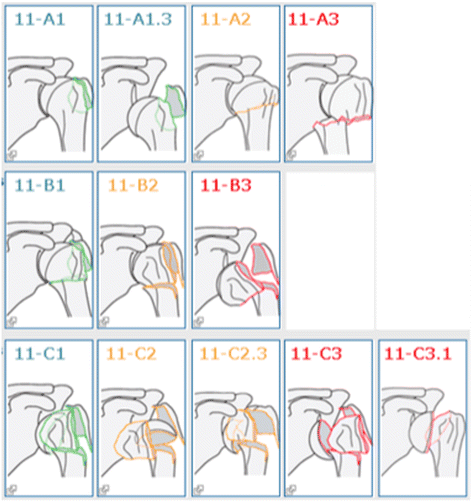



Validity Of Humerus Fracture Classification In The Swedish Fracture Register Bmc Musculoskeletal Disorders Full Text
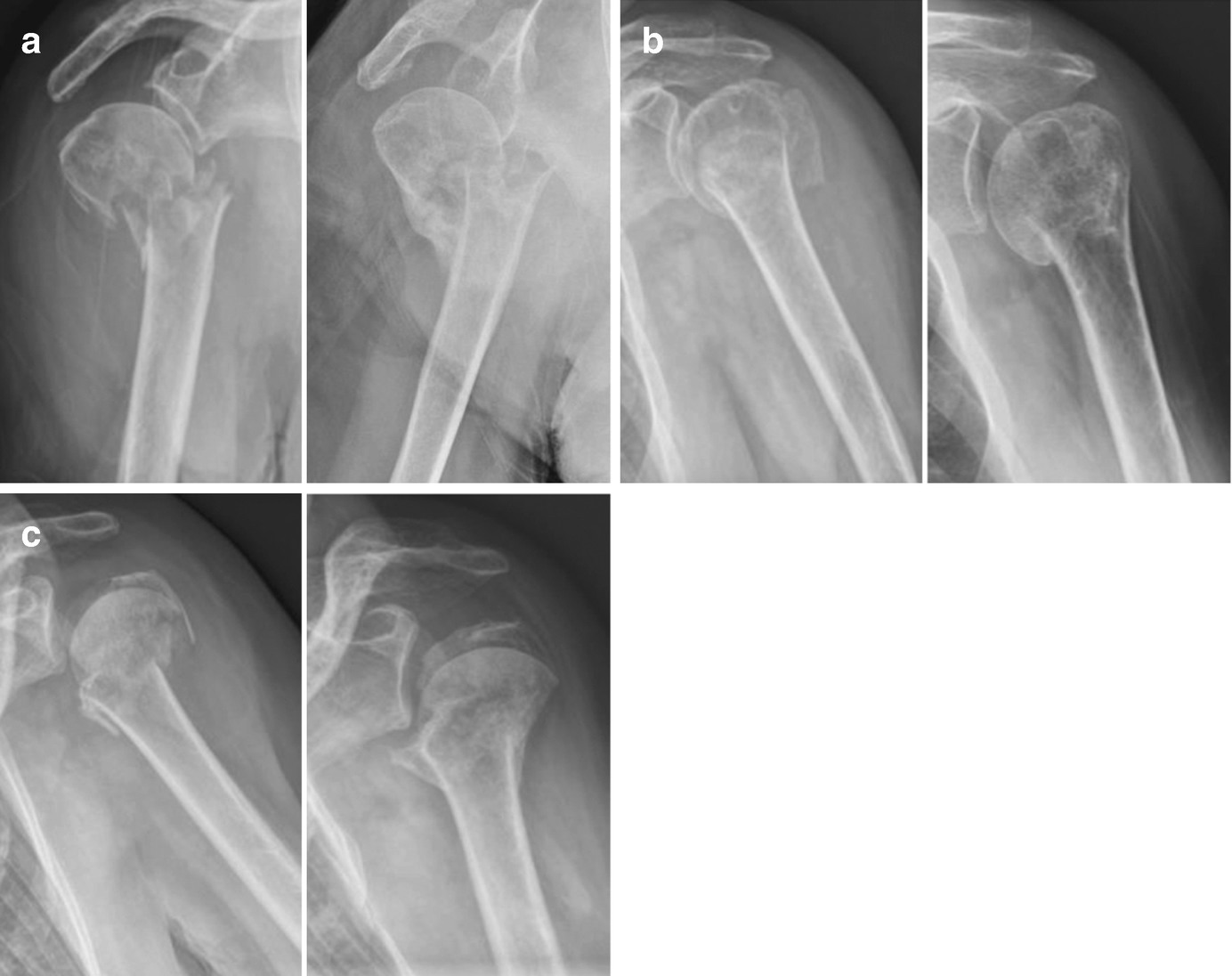



Proximal Humeral Fractures The Choice Of Treatment Springerlink




The Ao Ota Classification Consists Of Three Types Nine Groups And 27 Download Scientific Diagram



Orif Plate Fixation For 4 Part Slight Displacement Valgus Malalignment




Neer S Classification Of Proximal Humeral Fractures Modified From Neer Download Scientific Diagram




Proximal Humerus Fracture Classification Eorif




Finite Element Analyses For Predicting Anatomical Neck Fractures In The Proximal Humerus Clinical Biomechanics
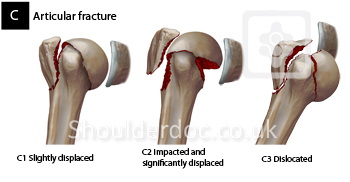



Proximal Humerus Fracture Classifications Shoulderdoc




Proximal Humerus Fracture Core Em




Classifications In Brief The Neer Classification For Proximal Humerus Fractures Abstract Europe Pmc




Classification And Imaging Of Proximal Humerus Fractures Sciencedirect




Pdf Poor Interobserver Reliability Of Ao Classification Of Fractures Of The Distal Radius Additional Computed Tomography Is Of Minor Value Semantic Scholar




Trends In Epidemiology And Patho Anatomical Pattern Of Proximal Humeral Fractures Abstract Europe Pmc




Trends In Epidemiology And Patho Anatomical Pattern Of Proximal Humeral Fractures Semantic Scholar




Distal Humerus Fractures Trauma Orthobullets




Classifications Of Proximal Humeral Fractures Rotator Cuff
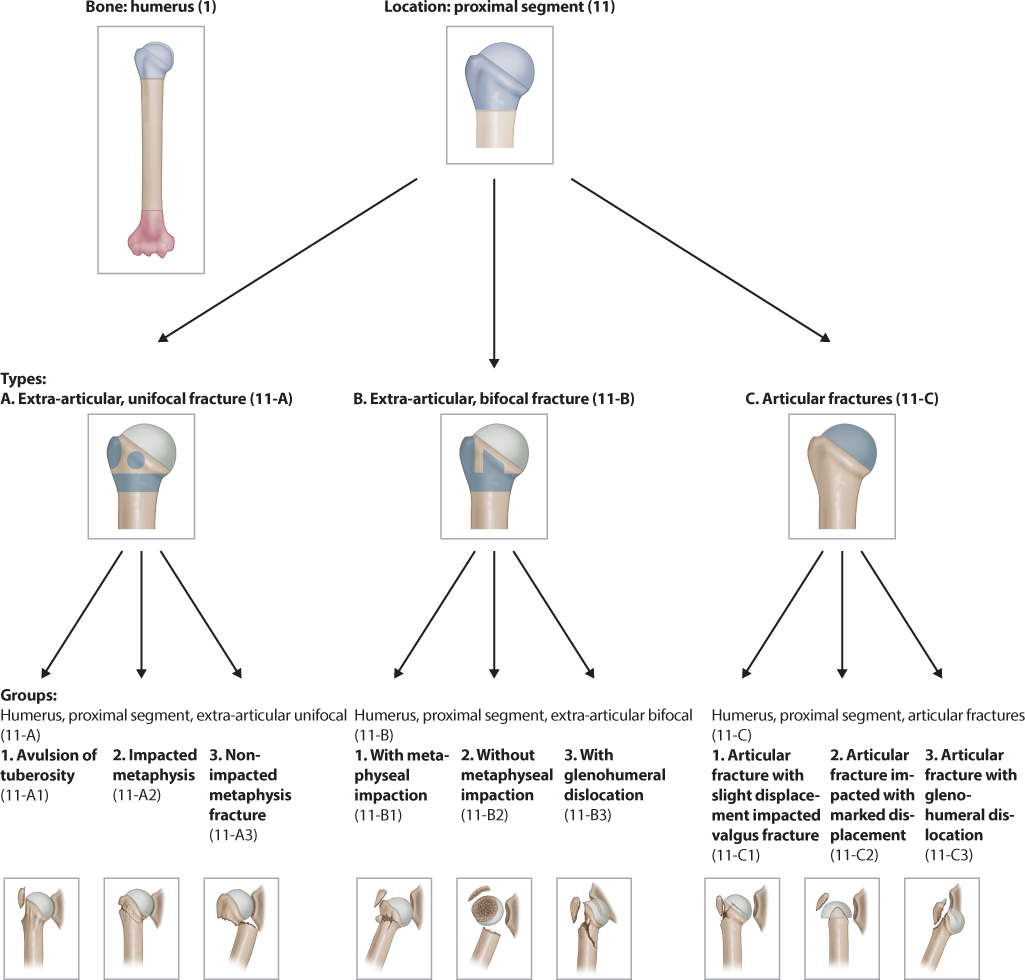



Proximal Humeral Fractures Musculoskeletal Key




Training Improves Agreement Among Doctors Using The Neer System For Proximal Humeral Fractures In A Systematic Review Journal Of Clinical Epidemiology




Training Improves Agreement Among Doctors Using The Neer System For Proximal Humeral Fractures In A Systematic Review Journal Of Clinical Epidemiology




Humeral Shaft Fractures Open Reduction Internal Fixation Musculoskeletal Key




Proximal Humeral Fractures




Proximal Humerus Fracture Wikipedia




Jaypeedigital Ebook Reader




Ao Ota Classification Of Distal Humeral Fractures Radiology Reference Article Radiopaedia Org



Humerus Proximal Aocms



Correlation Between Classification And Secondary Screw Penetration In Proximal Humeral Fractures




Proximal Humeral Fracture Dislocation Ao Classification Image Radiopaedia Org




Figure 1 From Functional Results Of Displaced Proximal Humerus Fractures In Children Treated By Elastic Stable Intramedullary Nail Semantic Scholar
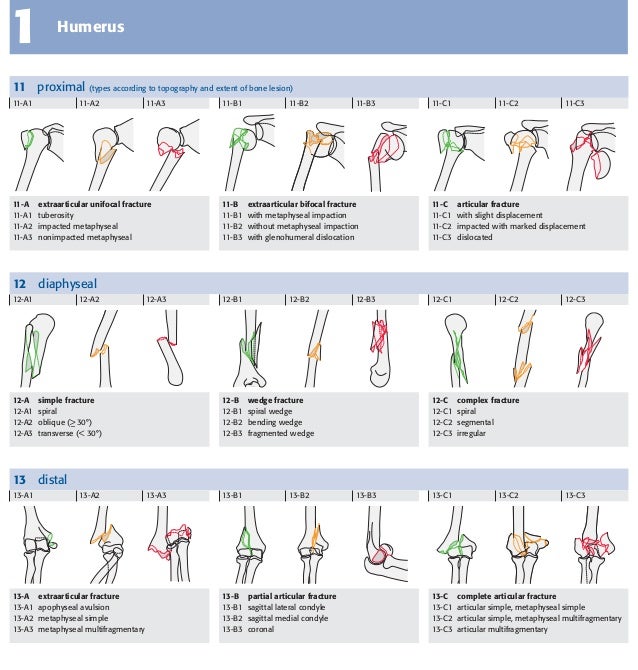



Muller Ao Classification




Proximal Humerus Fractures Evaluation Management And Nonsurgical Treatment Sciencedirect
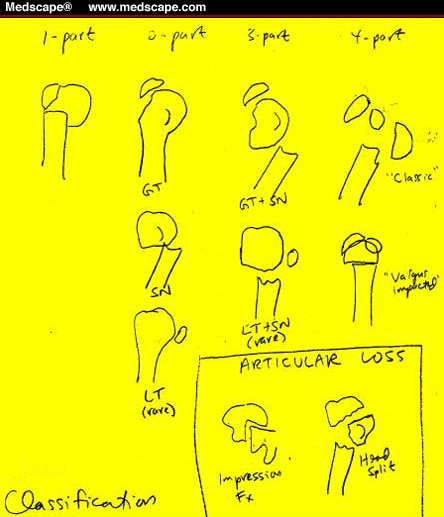



Evaluation And Classification Of Proximal Humeral Fractures




Proximal Humerus Fractures Understanding And Managing The Fracture Musculoskeletal Key




Proximal Humerus Fractures Trauma Orthobullets



Acta Chirurgiae Orthopaedicae Et Traumatologiae Cechoslovaca
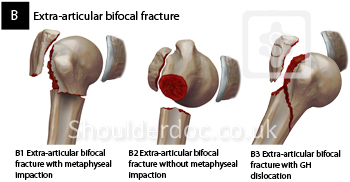



Proximal Humerus Fracture Classifications Shoulderdoc




Pdf Proximal Humeral Fractures Current Concepts In Classification Treatment And Outcomes Semantic Scholar
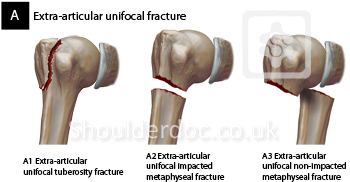



Proximal Humerus Fracture Classifications Shoulderdoc




Humerus Shaft Musculoskeletal Key




Four Segment Classification Of Proximal Humeral Fractures Purpose And Reliable Use Journal Of Shoulder And Elbow Surgery
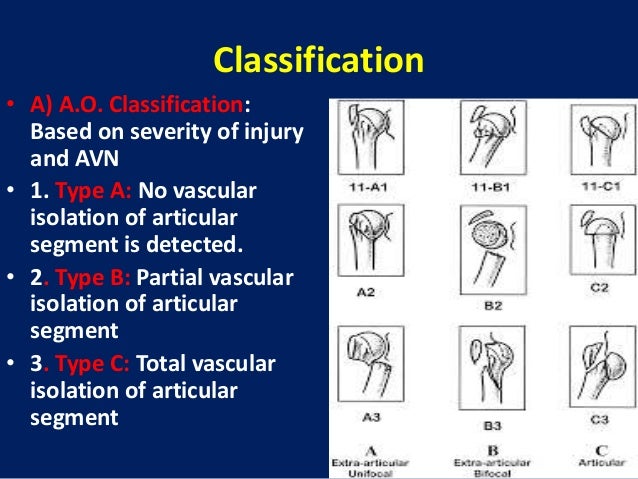



Fracture Proximal Humerus Fixation With K Wires And External Fixator




Scielo Brasil Reproducibility Of Three Classifications Of Proximal Humeral Fractures Reproducibility Of Three Classifications Of Proximal Humeral Fractures




Radial Nerve Injuries Associated With Humeral Fractures Journal Of Hand Surgery




Ao Asif Fracture Classification Plastic Surgery Key




Proximal Humerus Fracture Classifications Shoulderdoc




Jaypeedigital Ebook Reader
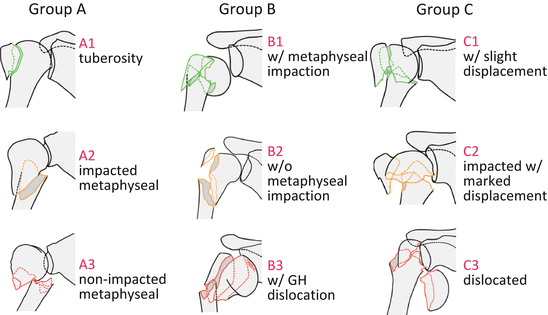



Proximal Humeral Fractures Classification And Treatment Springerlink
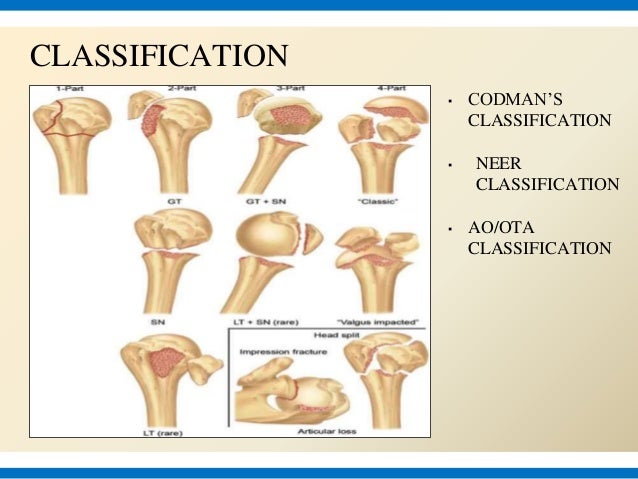



Mipo Technique For Proximal Humerus Fracture




The Neer Classification For Proximal Humeral Fractures Modified Figure Download Scientific Diagram




Epidemiology And Patho Anatomical Pattern Of 2 011 Humeral Fractures Data From The Swedish Fracture Register Bmc Musculoskeletal Disorders Full Text




Humeral Shaft Fractures Sciencedirect




Translation Between The Neer And The Ao Ota Classification For Proximal Humeral Fractures Do We Need To Be Bilingual To Interpret The Scientific Literature Semantic Scholar




Anatomy And Classification Of Proximal Humerus Fractures Musculoskeletal Key




Ao Ota Classification Of Proximal Humerus Fractures Reproduced With Download Scientific Diagram




Proximal Humeral Fractures In Younger Patients Fixation Techniques And Arthroplasty Journal Of Shoulder And Elbow Surgery




Figure 2 From Plating In Proximal Humeral Fractures Semantic Scholar




Zgnpkok Iazicm
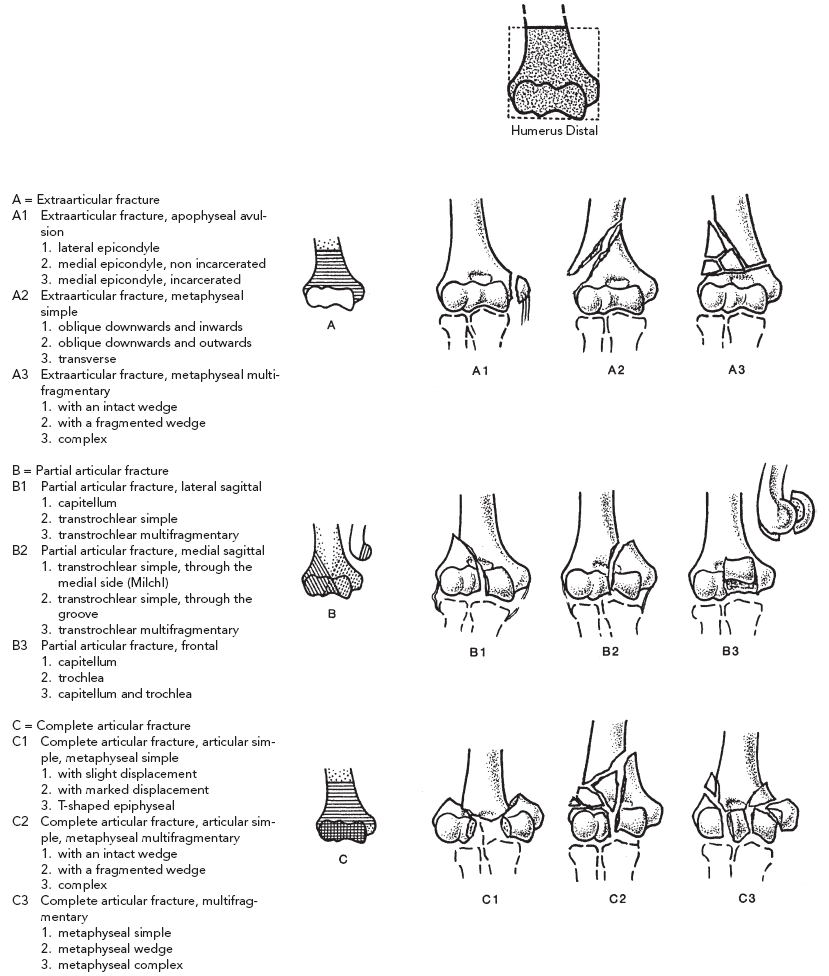



Replacement Arthroplasty For Acute Fractures Musculoskeletal Key
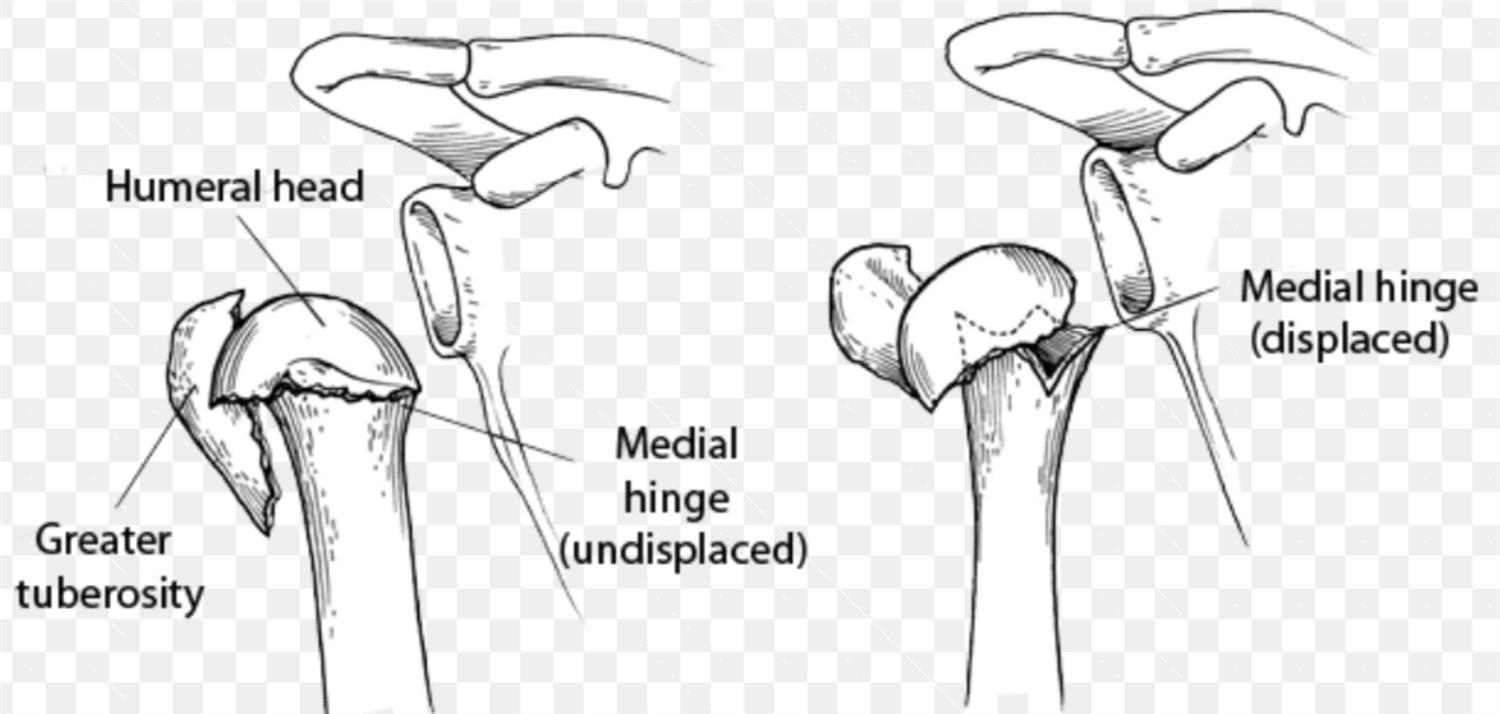



Proximal Humerus Fractures Trauma Orthobullets
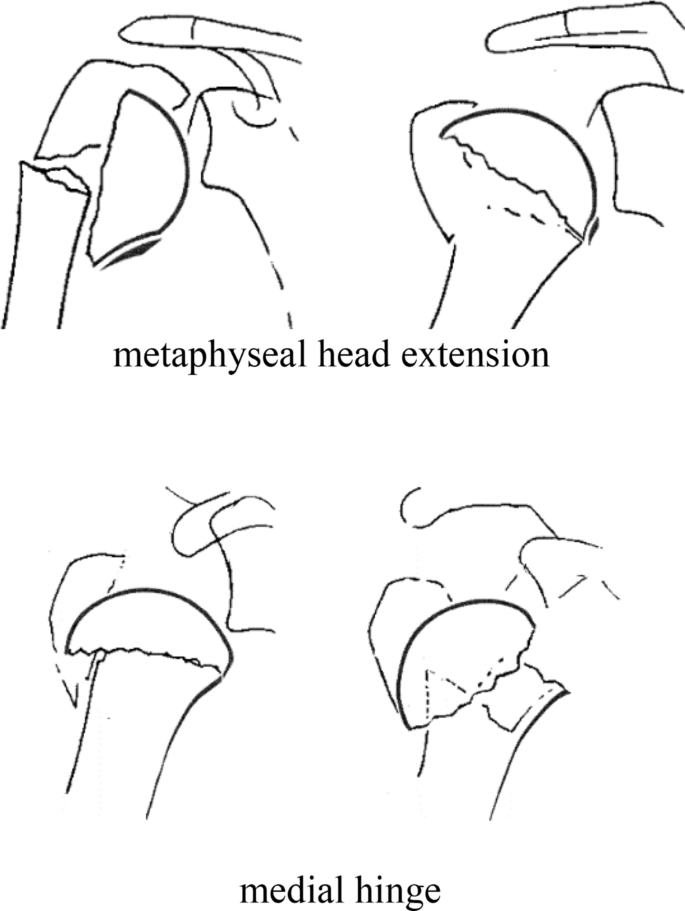



Estes Recommendations On Proximal Humerus Fractures In The Elderly Springerlink




The Three Types And Nine Groups Of The Ao Classification For Proximal Download Scientific Diagram




Proximal Humerus Fractures Evaluation Management And Nonsurgical Treatment Sciencedirect
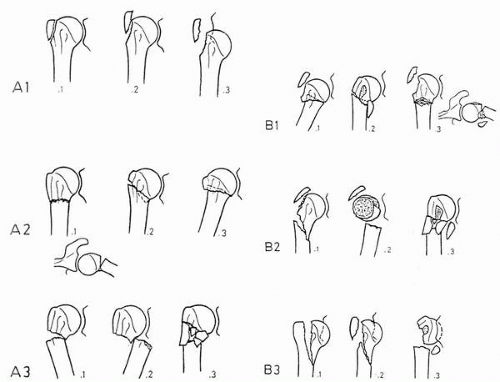



Fractures Musculoskeletal Key




Proximal Humerus Fractures Trauma Orthobullets
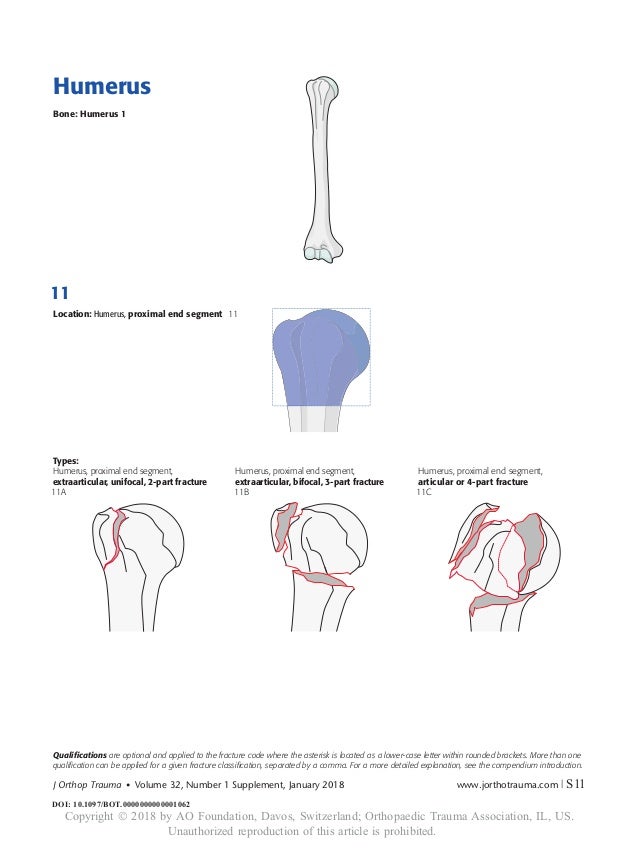



Ao 18


